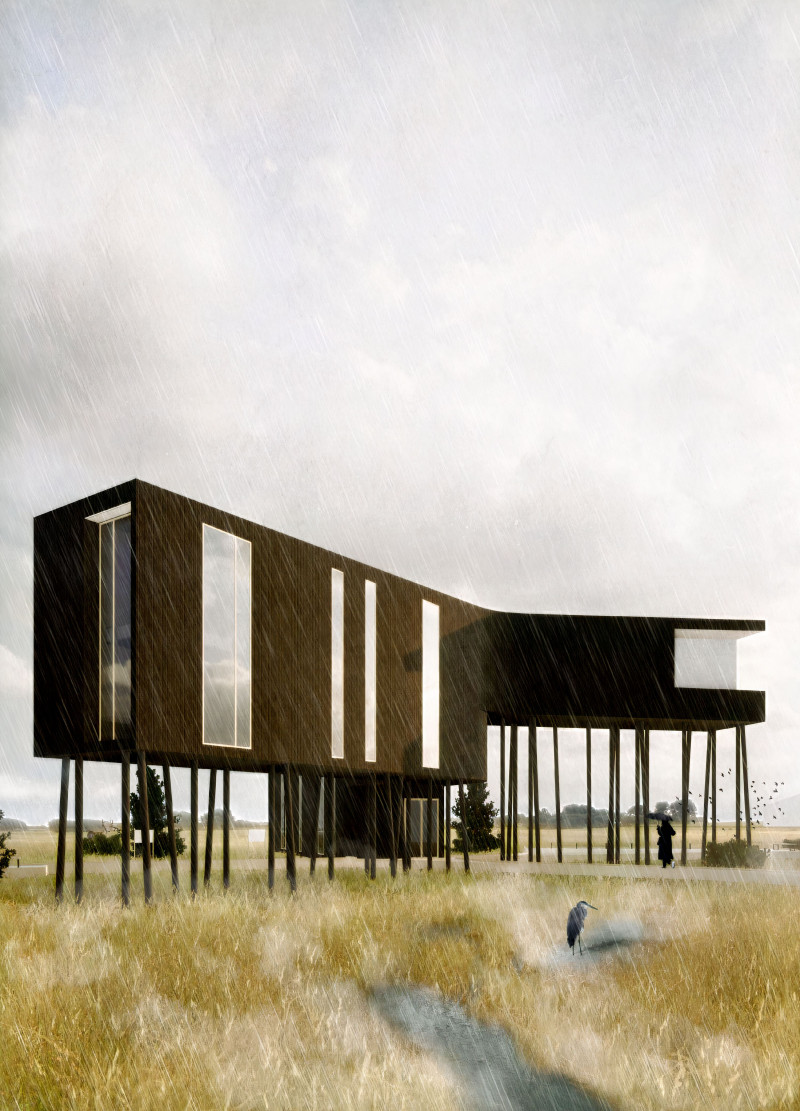5 key facts about this project
Marsh Outpost, located in De Smet, South Dakota, serves to emphasize the special characteristics of the surrounding marshland, while evoking local historical narratives.
The project represents a link between nature and human habitation, promoting sustainable practices through its design choices. The elevated structure minimizes ecological disruption, allowing for unobstructed views and interaction with the local landscape. This functional space serves as a visitor center, recreation area, and educational hub, while maintaining ties to its geographical and cultural context.
Environmental Integration in Form Design
One of the unique features of the Marsh Outpost is its structurally bent geometry. The form mimics natural shapes prevalent in the surrounding marshland, creating an organic dialogue with the landscape. The design incorporates a variety of layered platforms, inviting exploration and engagement. The use of locally sourced timber and weathered finishes connects the building aesthetically and historically to its setting.
The orientation is carefully considered, maximizing views of key landmarks including the Laura Ingalls Homestead and Silver Lake. This intentional alignment enhances the visitor experience and reinforces the connection to local heritage. Extensive glazing allows natural light to permeate the interior spaces, establishing a constant visual link between inside and outside.
Elevated Foundation and Functional Layout
Another significant aspect of the structure is its elevated foundation. Supported by slender columns, the building is raised above potential flood levels, adhering to environmental strategies while providing unique vantage points over the marsh. This feature is complemented by expansive deck areas that further facilitate interaction with the landscape.
The functional design incorporates open and accessible areas to encourage circulation and collaboration. A central, naturally lit corridor serves as a unifying element, facilitating visitor orientation and enhancing spatial perception. The selection of locally sourced timber, plaster, weathered wood, and hardwood flooring establishes a minimalist yet inviting atmosphere, harmonizing the architecture with the surrounding environment while simultaneously reinforcing the building's sustainability, structural robustness, and cohesive design.






















































